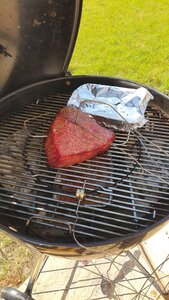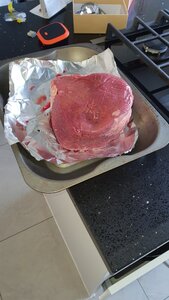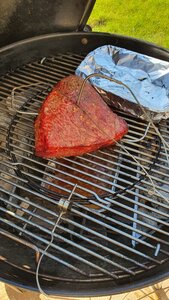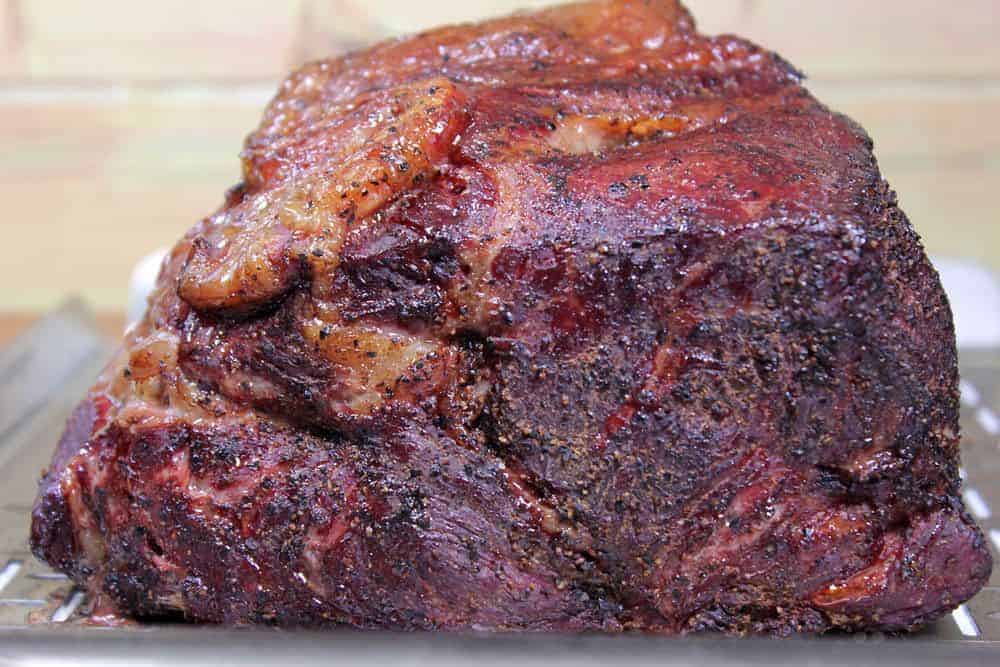Hi all.
First Post, based in the uk.
Really enjoying cooking on the grill and want to improve my skills. Would appreciate some help on the below.
Tried to do a roast topside of beef on the bbq. Followed a weber recipe I found, had 1.7kg of meat. Target temps and times were 200 c and 1.5 hours cooking.
I used two coal baskets to get indirect heat, with a small drip tray full of water in the middle.
I had 3 probes in the meat at various thick parts and a grill probe to get accurate cooking temps. I was surprised how close the weber lid thermometer was to the actual grill temperature.
I also had a foiled over drip tray with damp wood chips (weber whisky which I presoaked for 30 mins) placed next to the meat on the grill.
I noticed that the meat cooked through at significantly different temps, with a max 14 degree c variation. I was aiming for medium rare at 56 degrees, so waited until all 3 probes gave that reading. It meant that i had some parts done at 67 when the last part caught up. All probes were at deep points in the meat. I even rotated it half way through cooking to ensure an even cook.
Was surprised to see such huge variation. End result was a dry roast, with one area cooked medium rare.
Could it be that the foiled over drip tray acted like a heat deflector next to the beef? Any suggestions on what went wrong. Few pics attached
First Post, based in the uk.
Really enjoying cooking on the grill and want to improve my skills. Would appreciate some help on the below.
Tried to do a roast topside of beef on the bbq. Followed a weber recipe I found, had 1.7kg of meat. Target temps and times were 200 c and 1.5 hours cooking.
I used two coal baskets to get indirect heat, with a small drip tray full of water in the middle.
I had 3 probes in the meat at various thick parts and a grill probe to get accurate cooking temps. I was surprised how close the weber lid thermometer was to the actual grill temperature.
I also had a foiled over drip tray with damp wood chips (weber whisky which I presoaked for 30 mins) placed next to the meat on the grill.
I noticed that the meat cooked through at significantly different temps, with a max 14 degree c variation. I was aiming for medium rare at 56 degrees, so waited until all 3 probes gave that reading. It meant that i had some parts done at 67 when the last part caught up. All probes were at deep points in the meat. I even rotated it half way through cooking to ensure an even cook.
Was surprised to see such huge variation. End result was a dry roast, with one area cooked medium rare.
Could it be that the foiled over drip tray acted like a heat deflector next to the beef? Any suggestions on what went wrong. Few pics attached










